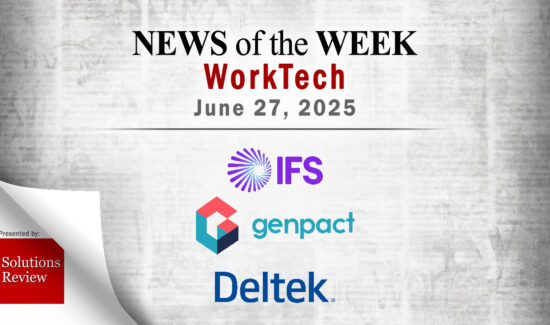What’s Changed: 2022 Magic Quadrant for Oracle Cloud Application Services


The editors at Solutions Review have highlighted the updates found in the 2022 edition of Gartner’s Magic Quadrant for Oracle Cloud Application Services, Worldwide.
Analyst house Gartner Inc. recently released the 2022 version of its Gartner Magic Quadrant for Oracle Cloud Application Services, Worldwide. According to Gartner, Oracle Cloud Application (OCA) services encompass consultancy, migration, ongoing services, implementation, post-implementation evolution, and optimization services for Oracle’s various applications. The 2022 iteration is not available yet, but you can find last year’s version here.
The vendors listed in Gartner’s report all had to have an “anchoring” OCA product correlated with at least one of the solutions named in Oracle’s Cloud Excellence Implementer (CEI) Program. The most common services offered by the partners listed in Oracle’s CEI program focus on advertising and customer experience (ACX), human capital management (HCM), industry applications (IA), enterprise resource planning (ERP), and supply chain management (SCM).
Widget not in any sidebars
What’s Changed: 2022 Gartner Magic Quadrant for Oracle Cloud Application Services, Worldwide
In this updated Magic Quadrant, Gartner identifies the 19 most significant Oracle Cloud Application Service providers in the marketplace and evaluates the strengths and weaknesses of each. Gartner’s report also features the signature “Magic Quadrant” graph, illustrating how Gartner ranks the vendors’ ability to execute their vision. The diagram includes four quadrants: leaders, challengers, niche players, and visionaries.
Gartner adjusts the criteria it uses to evaluate providers to reflect changing trends in the market. The 2022 edition of the Magic Quadrant for Oracle Cloud Application Services looks different from last year’s report. For example, HCL Technologies was added to this year’s report, while the placement of other companies in the Magic Quadrant graph shifted.
A breakdown of each category and the companies associated with it is below.
Leaders
Accenture is once again a Leader in Gartner’s Magic Quadrant report. The company is one of the largest OCA service providers, has over 10,000 OCA full-time equivalents (FTEs), and has experienced estimated revenue growth of 42-percent since last year’s report. Of that revenue, Gartner says 65-percent comes from large clients and 35-percent from small-to-midsize enterprises. Its strengths as an OCA service provider include its talent investment, sustainability initiatives, end-to-end transformation capabilities, and strategic partnership with Oracle.
Like last year’s report, Deloitte comes in behind Accenture and has over 10,000 OCA FTEs. Gartner says the company has seen revenue growth of approximately 7-percent since the previous year, with 42-percent coming from large clients and 58-percent from SMBs. Deloitte’s specialties include its industry-ready solutions, global project delivery capabilities, agile execution, outcome-based deal constructs, and collaborative approach to partnerships and client relationships.
PwC is the next Leader, although its placement in the graph has gone up since 2021’s report. The company is defined as “a large OCA service provider” based on 5,000 to 10,000 OCA FTEs. Its OCA revenue growth is estimated at 45-percent, with 40-percent from large clients and 60-percent from other SMBs. Gartner spotlights PwC’s strengths as being its significant revenue growth, co-innovation partnership with Oracle’s product development team, and its industry-based assets for healthcare, financial services, media, tech, industrial products, consumer, and telecom markets.
TCS has 5,000 and 10,000 OCA FTEs, making it another large OCA service provider. Gartner says the company experienced OCA revenue growth of 51-percent, with 59-percent coming from large businesses and the remaining 41-percent coming from small and midsize enterprises. TCS has seen considerable in the Oracle cloud practice thanks to #OneTCS. This consulting-led model leverages the company’s technology expertise, industry-specific accelerator investments, and cloud offering to meet clients’ needs.
Infosys is a large OCA service provider with an estimated OCA revenue growth of 20-percent. The company has 5,000 to 10,000 OCA FTEs, and 57-percent of its revenue comes from large clients and 43-percent from SMBs. Gartner identifies Infosys’ OCA service provider strengths as stemming from its flexible pricing models, customer-centric services, and commitment to industry-specific solutions and partnerships,
IBM is a “very large” OCA service provider with over 10,000 OCA FTEs. It finalizes the Leader category with 16-percent revenue growth since last year, 58-percent coming from SMBs and 42-percent from large enterprises. The company’s standout strengths include a global cloud presence in every major region, client-centric partnerships, and digital innovations via the “IBM Garage,” which delivers outcome-based tools to solve customer-specific pain points.
Challengers
Oracle Services is the top Challenger in Gartner’s Magic Quadrant for 2022. The company’s internal OCA services have shown an estimated OCA revenue growth of 36-percent, with 31-percent coming from large-scale businesses and 69-percent from SMBs. Its most significant strengths include its ability to leverage Oracle’s partner ecosystem, industry-specific solutions, and the “one Oracle” experience it offers clients since it operates as the vendor, implementer, and product provider of post-go-live services.
Wipro is the second and final Challenger in the Magic Quadrant. It’s a large OCA service provider with 5,000 to 10,000 OCA FTEs and an estimated revenue growth of 46-percent. Gartner identifies its strengths as its home-built PaaS extensions across various industries and active expansion of Oracle cloud services via partnerships, acquisitions, co-innovations with customers, and internal technology capabilities.
Visionaries
KPMG is the only Visionary identified in Gartner’s research. Based on its 5,000 to 10,000 OCA FTEs, it’s a large OCA service provider that has experienced an estimated revenue growth of 26-percent since 2021. Of that revenue, 66-percent came from large clients and 34-percent from small-to-midsize businesses. Its OCA service strengths include its focus on ERP and finance implementations and transformation projects, its technology capabilities in the Oracle cloud practice, and a library of assets from its client experiences.
Widget not in any sidebars
Niche Players
Inspirage is a smaller OCA service provider with fewer than 1,000 OCA FTEs. However, the company’s OCA revenue also grew by 23-percent since last year, with 40-percent of that growth coming from large clients and the remaining from small-to-midsize enterprises. While its size means Inspirage offers limited global coverage and fewer pricing models, Inspirage’s exclusive focus on Oracle means it has the expertise and partnerships that clients look for in an OCA service provider.
Evosys is a medium service provider based on its 1,000 to 5,000 OCA FTEs. It’s experienced OCA revenue growth of 11-percent in the last year, which predominantly (75-percent) came from its contract with small and midsize clients. The company has expertise in multiple industry verticals and uses a value-based delivery system to help clients maximize ROI on their cloud investments. However, Gartner does note that Evosys has limited OCM capabilities and does not currently offer extensive organizational change management services.
EY is also a medium provider with 1,000 to 5,000 OCA FTEs. It’s experienced an OCA revenue growth of 25-percent since the last report, with nearly 80-percent of that revenue coming from midsize and small enterprises. Its strengths primarily stem from its extensive transformation, auditing, and customer-centric offerings, which help customers assess and design a business-led application strategy. However, that percentage skews toward the midsize enterprise, as Gartner’s research notes that EY’s expertise and offerings might not be the best fit for smaller companies.
LTI is a medium OCA service provider with 50-percent revenue growth in the last year. That growth is split almost equally across large and SMB clients, with 47-percent going to the former and 53-percent to the latter. Gartner does note that LTI has limited OCM and transformation offerings but also says the company received high scores for its delivery assets, customer interactions, and industry focus.
Cognizant is the only large OCA service provider in the Niche Player category. It experienced an estimated OCA revenue growth of 32-percent since last year, with 70-percent of that coming from more prominent clients. Despite having lower innovation rates in its managed services, Cognizant remains a popular provider due to its long-running partnership with Oracle, investment in cloud skills, and expanding industry solution suite.
Capgemini, another medium OCA provider, had an estimated OCA revenue growth of 32-percent since 2021, with the vast majority of that (82-percent) coming from its engagements with large companies. Its strengths as an Oracle Cloud Application Services provider include its project management, flexible execution strategies, industry-specific assets for the manufacturing sector, and operational optimizations, which are driven by advancements for its prebuilt assets.
Despite having fewer than 1,000 OCA FTEs, making it a small provider, HCL Technologies experienced impressive revenue growth of 80-percent in the last year. 63-percent of that growth came from large companies, and the remaining 37-percent came from SMBs. Gartner does note that the provider is somewhat behind the curve in OCA tools and accelerators but compensates for that with expertise in Oracle’s solutions, which help it offer clients remote delivery and post-implementation services.
As a medium OCA service provider, DXC Technology has between 1,000 and 5,000 OCA FTEs. Despite only reporting a 3-percent increase in its OCA revenue growth, which is noticeably lower than other vendors listed, DXC still has a mature model for its managed services and industry templates. These services are backed up by an extensive team of OCA-specific advisors who help clients meet their needs.
Tech Mahindra is also a medium-level OCA service provider with estimated revenue growth of 31-percent, with one-third of that coming from small and midsize enterprises and the remaining 33-percent from large companies. Its strengths include its lift-and-shift capabilities, midsize enterprise specializations, and prioritization of core industries like communications, manufacturing, transportation, travel, logistics, and utilities. However, Gartner does note that the company’s transformation and OCM capabilities are more limited than other companies listed in the report.
Huron is the final company named in Gartner’s report. It’s a smaller OCA service provider with fewer than 1,000 OCA FTEs and saw an estimated 7-percent increase in OCA revenue since the last iteration of the Magic Quadrant. Despite its limited growth and reach, Huron provides collaborative partnerships with evident industry expertise, making it a compelling option for smaller companies looking for help with EPM and ERP implementations.























